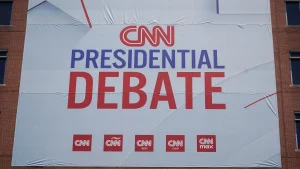Inside the CNN Presidential Debate: What to Expect
Inside the CNN Presidential Debate, one should anticipate a high-stakes discourse between potential leaders of the nation. This platform enables future leaders to present their perspectives, political agendas, and propose potential solutions to the various challenges facing the nation. The Presidential Debate structure often involves the candidates answering questions on a broad range of topics from the economy, health, education, international relations, and domestic policies. Each candidate is given a specific amount of time to respond, providing a chance to express their stances and convince viewers of their leadership capabilities.
CNN, being a renowned media platform, ensures the debates are moderated by seasoned journalists who ask incisive and timely questions. The moderators play a crucial role in maintaining decorum, ensuring equitable distribution of speaking time and keeping the candidates on topic. The Presidential Debate on CNN also integrates citizens’ questions, making it a more interactive and inclusive event.
The debates’ outcomes can significantly influence public opinion and voter behavior, making them a critical part of the Presidential election process. While the CNN Presidential Debate is a staged event, it is also an unpredictable spectacle as candidates can surprise viewers with their responses, rhetoric, and demeanor. The way they handle pressure, respond to criticisms, and articulate their ideas can either win hearts or turn off potential voters.
Furthermore, these debates offer a unique insight into the candidates’ personalities, their ability to think on their feet, and their overall preparedness for the highest office in the land. This makes the CNN Presidential Debate a must-watch event not only for the American electorate but also for international observers keen on understanding the potential future direction of US policies.

Beyond the verbal exchanges, body language, facial expressions, and the candidates’ overall demeanor are equally scrutinized. How a candidate reacts to a tough question, their tone, and their interaction with the other candidates can reveal a lot about their temperament and leadership style. In the age of social media, even the smallest slip-up can be amplified and repeated, making every moment of the debate significant.
Post-debate analysis is another vital aspect of the CNN Presidential Debate. Expert panels dissect the candidates’ performances, highlighting crucial moments, analyzing policy proposals, and assessing the potential impact on the electorate. These analyses often shape the subsequent media narrative and public discourse, making them a crucial part of the overall debate experience.
In conclusion, the CNN Presidential Debate is a high-profile event that provides an opportunity for Presidential candidates to articulate their visions for the nation. It allows voters to assess the potential leaders’ capabilities, their policy proposals, and their ability to handle pressure. Above all, it is a unique democratic exercise that underlines the importance of open dialogue and public scrutiny in shaping the future of the nation. Therefore, it is an event that commands attention, both within the United States and globally.
Structure and Format of the Debate
Debate structure and format are integral components that help in organizing and regulating the flow of a debate. A traditional debate usually consists of two sides: the affirmative and the negative. Each side is given an equal chance to present their arguments, counter-arguments, and rebuttals. The structure typically begins with an opening statement from each side, which is followed by a series of alternating speeches that delve deeper into the various facets of the topic at hand.
The format varies depending on the style of debate, but it generally includes a fixed time for each segment. For instance, in a typical high school or university debate, each speaker might be allotted a specific number of minutes to present their initial arguments, followed by a shorter period for rebuttals or cross-examination. The debate concludes with a closing statement from each side, summarizing their main points and countering their opponent’s arguments.
The structure and format of a debate are designed to ensure fairness and allow each side an equal opportunity to express their viewpoint. They also help to maintain order and decorum during the debate, preventing it from devolving into a shouting match or personal attacks. The rules of the debate, including the time limits for each segment, are strictly observed to ensure that both sides have an equal opportunity to present their arguments and rebuttals.
The format of the debate can also influence the strategies used by each side. For example, the order of speakers can give one side an advantage in shaping the narrative of the debate. Understanding the structure and format of a debate is crucial for both participants and spectators, as it sets the framework within which the discussion unfolds and ultimately determines how effectively each side can present their case. It takes skill, preparation, and a keen understanding of these rules to excel in a debate.

Participating Candidates and Their Profiles
Participating candidates and their profiles are essential elements in any election process, whether it be at a local level or on a grander national scale. The profiles of candidates offer a comprehensive overview of their professional background, personal beliefs, policy positions, and previous accomplishments. These profiles serve as a mirror, reflecting the candidate’s principles, ideologies, and their vision for the future. They provide potential voters with essential information, enabling them to make an informed choice.
The profile of a candidate can range from their educational qualifications and professional experiences to their stance on critical societal issues and their proposed solutions for the same. Candidates often come from diverse backgrounds, such as business, public service, academia, or activism, and their profiles should clearly articulate this diversity. A candidate’s profile might also include their voting history or legislative track record, if applicable, which could be an indicator of their decision-making style and priorities.
In addition to hard facts, a candidate’s profile also provides a glimpse into their character, values, and leadership style. It can reveal how they handle pressure, their commitment to serving their constituents, and their ability to negotiate and build consensus.
In essence, candidates’ profiles are a critical tool for voters as they navigate the complex process of selecting their representatives. Not only do they provide factual data, but they also offer insight into the candidates’ personality and leadership style. Therefore, it is crucial for every voter to study the profiles of participating candidates thoroughly before casting their vote. This is instrumental in ensuring that the elected representatives align with the voters’ values and expectations, ultimately leading to a more effective and representative governing body.
Moderator and Questioning Dynamics
A moderator plays a pivotal role in managing and controlling the flow of discussions, be it in forums, panel discussions, webinars, or even social media platforms. They have the responsibility of ensuring that the conversation stays on track, adheres to the guidelines, and remains respectful. The questioning dynamics as employed by a moderator form a crucial part of this process. The way a moderator poses questions can greatly influence the quality and depth of the responses. A well-phrased question can stimulate thought-provoking discussions, encourage participants to share their insights, and create an environment that fosters learning and growth. Conversely, poor questioning can stifle dialogue, lead to confusion, or even create a hostile environment.
Therefore, a moderator should be adept at framing questions that are clear, concise, and open-ended to promote healthy discussions. Furthermore, they should have the ability to navigate difficult topics with sensitivity and tact, ensuring that all participants feel valued and heard. A moderator’s questioning dynamics should also include the ability to listen actively, which means understanding the responses of the participants, acknowledging their viewpoints, and steering the conversation towards a productive discussion. The ultimate goal of a moderator should be to create a balanced and inclusive conversation where every participant feels comfortable to express their views while being respectful of others. In essence, the moderator and their questioning dynamics lie at the heart of a successful, engaging, and meaningful discussion.

Technical Aspects and Broadcast Details
Technical aspects and broadcast details encompass a broad range of factors that contribute to the successful transmission of digital content via various media platforms. Broadcast details refer to the specific parameters and guidelines that govern how content is transmitted, received, and displayed. This may include details about the signal strength, frequency, and duration of the broadcast, as well as the specific technology used to transmit and receive the signal.
The technical aspects, on the other hand, relate to the hardware and software components involved in the broadcasting process. This might include the cameras, microphones, and other equipment used to capture the content; the computer systems and software used to edit and encode the content; and the servers and transmission systems used to broadcast the content to viewers or listeners.
In broadcasting, it is essential to maintain high standards of audio and video quality. The technical aspects play a significant role in achieving this. For instance, the choice of camera and microphone can greatly affect the quality of the captured content, while the encoding software and transmission systems can influence the quality of the broadcast signal.
Meanwhile, the broadcast details ensure that the content is transmitted in a manner that is consistent with the expectations and requirements of the audience. For example, the broadcast frequency must be carefully chosen to avoid interference with other signals, and the broadcast duration must be timed to match the viewers’ or listeners’ schedules.
In the era of digital technology, understanding the technical aspects and broadcast details has become more crucial than ever. With the rise of online streaming platforms, the broadcasters now need to consider additional factors such as internet speed, data compression, and device compatibility. As the broadcasting landscape continues to evolve, the technical aspects and broadcast details will continue to play a vital role in the delivery of high-quality content to audiences worldwide.
